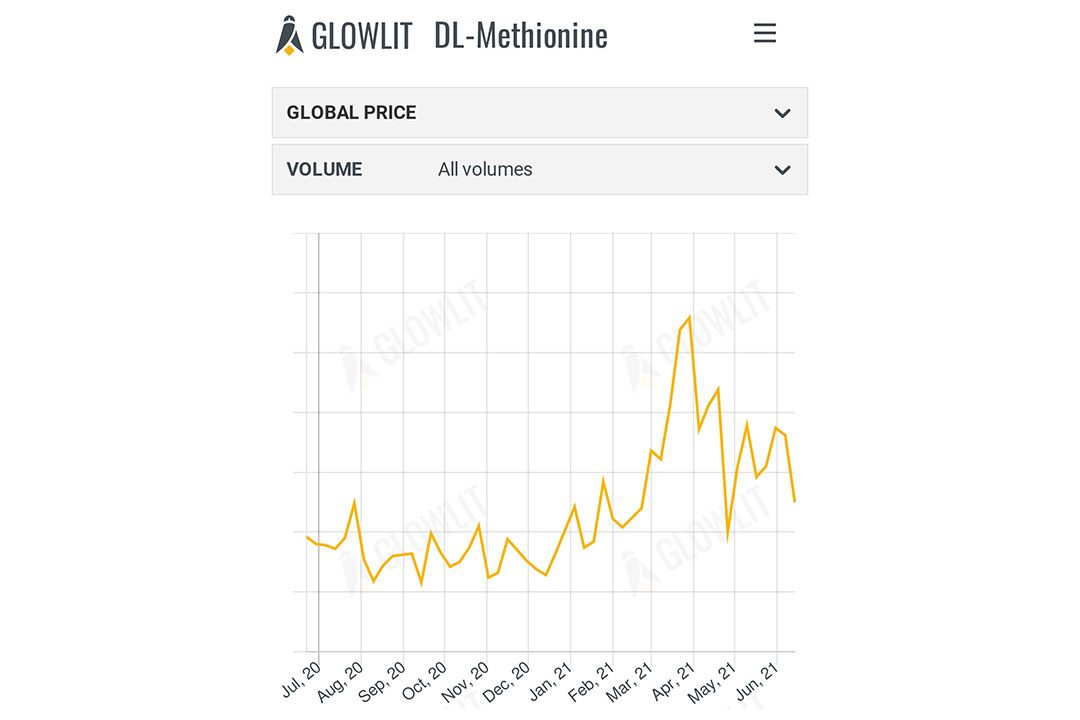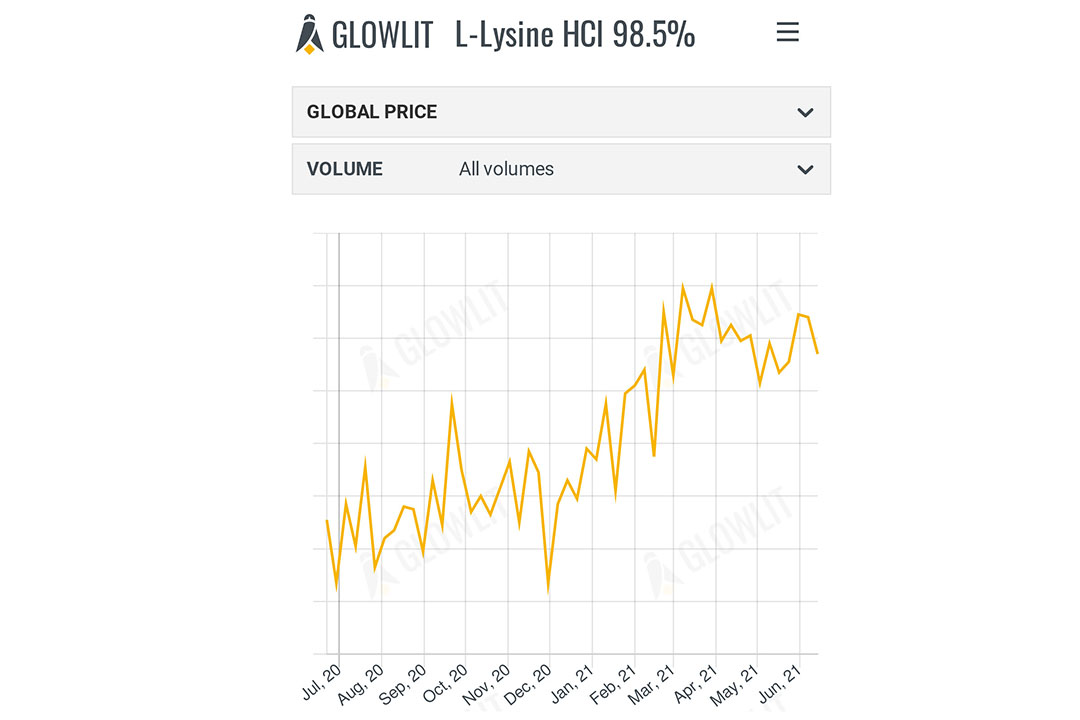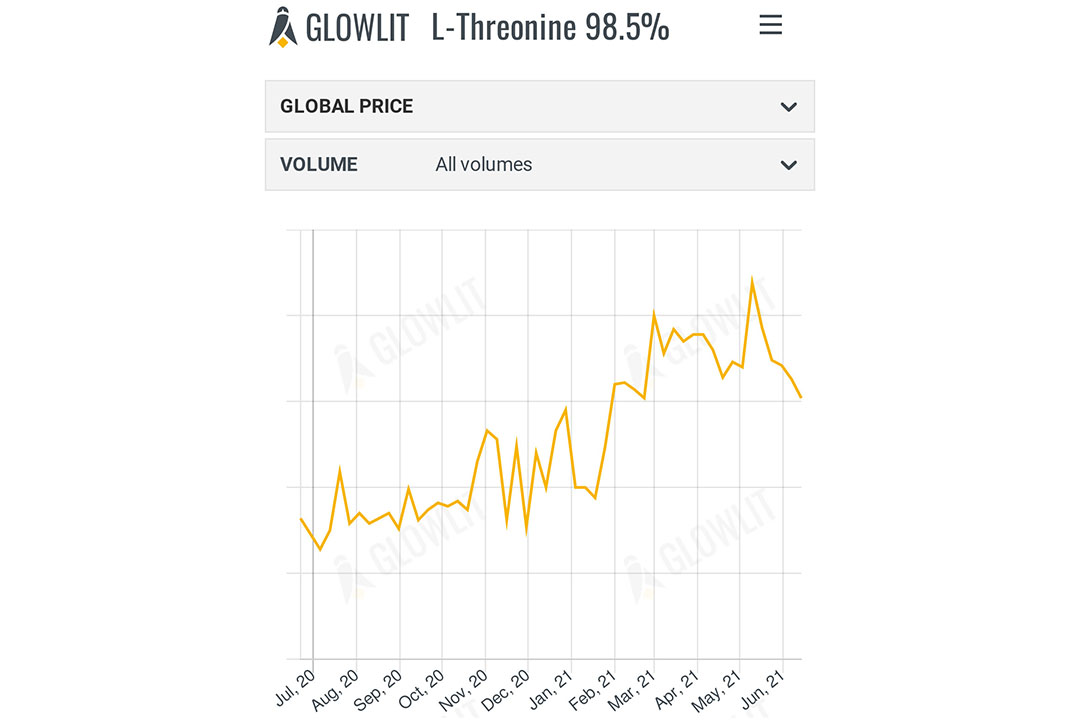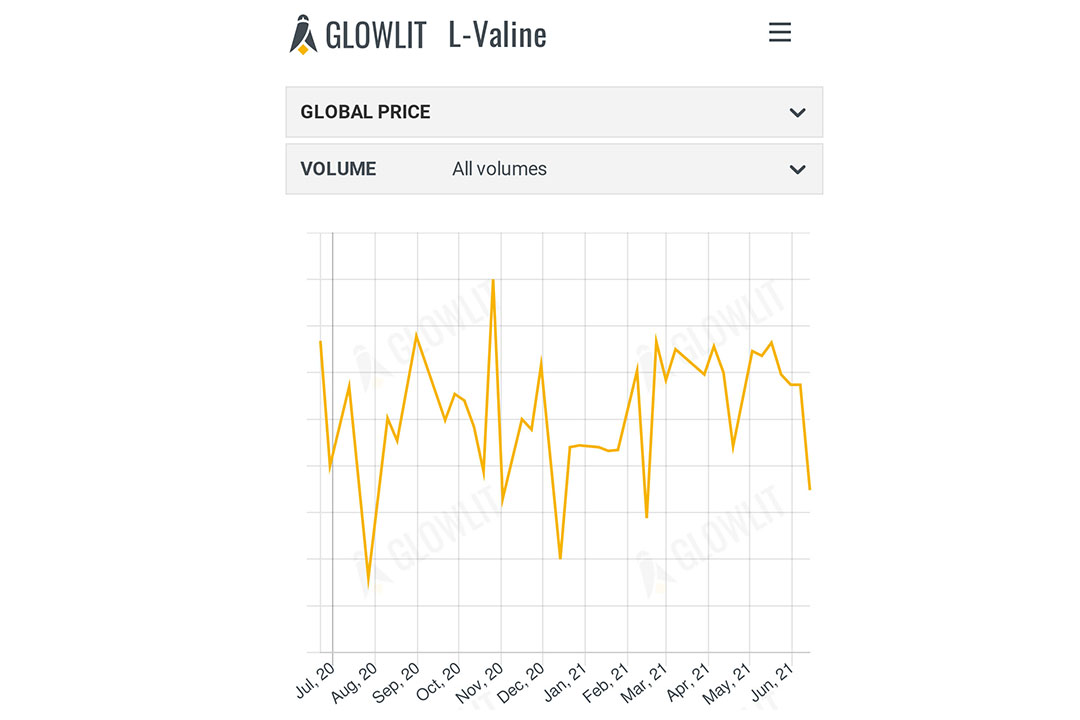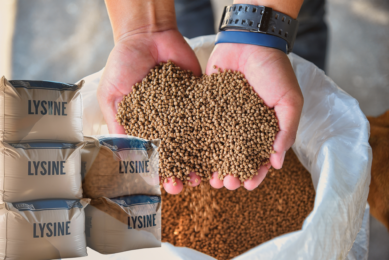Latest developments on the global amino acids market
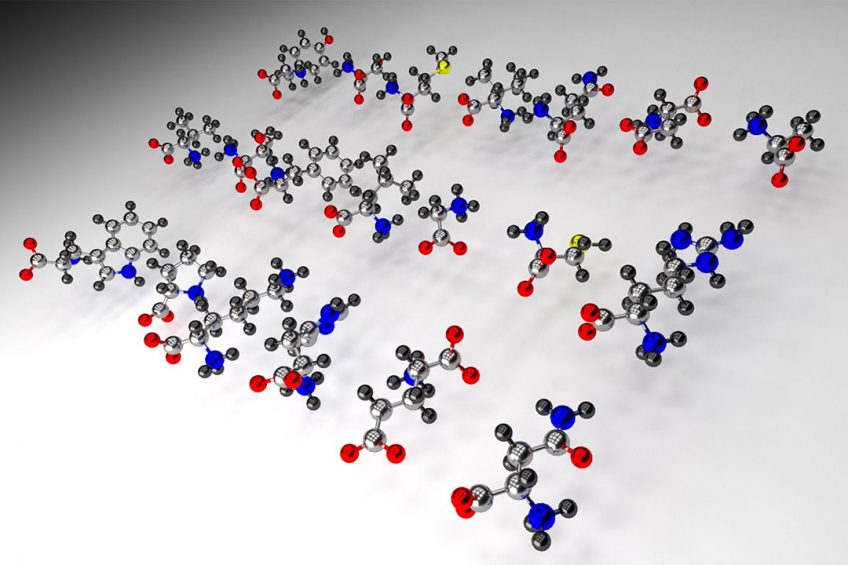
This weeks feed additive update takes a look at the latest developments in the amino acid market.
We’ve written previously about the looming summer lull when buyers are no longer able to help producers move the growing stock levels in their warehouses. This comes at a time when the supply and demand sides of the market are showing different indicators. A quick glance at the amino acid data gathered on Glowlit shows a declining price trend. At the same time, we’re hearing from Asian producers about a myriad of reasons for why the price of amino acids will increase in the near future. With all this conflicting data, buyers will need to sift through information on summer maintenance periods, Covid outbreaks and shipping challenges in order to plan their next move. What they find will determine how they place their bets, both the volume they commit to buy and at what price.
Methionine Anti-dumping Petition
Regardless of where their bets fall, we’re seeing overall profit margins among commoditized amino acids producers dwindle. To raise profits, companies can pursue 2 directions: regulation and innovation.
Taking the regulation route
We saw the impact of a company pursuing the regulatory route when Novus filed a Methionine Anti-dumping Petition with the US Government. As the ruling came to a close this month, Adisseo, one of the producers affected by the ruling, commented that “the preliminary duties imposed by this investigation have already driven up cost substantially, cutting into margins for domestic animal protein producers, adding cost to the grocery bill for U.S. customers, and impacting the competitiveness of U.S. meat producers in export markets”. Another way to read this: even as profit margins for many amino acids dwindle, producers of Methionine in the US are seeing higher profits.
Opting for innovation – less commoditized amino acids
The other option is to pursue innovation, developing and selling less commoditized amino acids within smaller markets, but at higher prices. Nutritionists are always searching for the next limiting amino acid in their ration. As an example, Valine has recently taken off as demand for the product has increased. But building the best ration isn’t just about finding the perfect formula. Ideally nutritionists should be able to consider the price of the various ingredients in their ration.
Here we highlight a few different amino acids.
